#battle of the little bighorn
Explore tagged Tumblr posts
Text

𝐏𝐫𝐞𝐭𝐭𝐲 𝐍𝐨𝐬𝐞 🌻🌻
Pretty Nose : A Fierce and Uncompromising Woman War Chief You Should Know
Pretty Nose (c. 1851 – after 1952) was an Arapaho woman, and according to her grandson, was a war chief who participated in the Battle of the Little Bighorn in 1876.In some sources, Pretty Nose is called Cheyenne, although she was identified as Arapaho on the basis of her red, black and white beaded cuffs. The two tribes were allies at the Battle of the Little Bighorn and are still officially grouped together as the Cheyenne and Arapaho Tribes.
On June 25, 1876, a battalion of the 7th Cavalry, led by George Armstrong Custer, was wiped out by an overwhelming force of Lakota, Dakota, Northern Cheyenne, and Arapaho.
There are many stories that come from this most famous battle of the Indian Wars. However, the most overlooked account is of the women warriors who fought alongside their male counterparts.
Minnie Hollow Wood, Moving Robe Woman, Pretty Nose (pictured), One-Who-Walks-With-The-Stars, and Buffalo Calf Road Woman were among the more notable female fighters.
Pretty Nose fought with the Cheyenne/Arapaho detachment.
One-Who-Walks-With-The-Stars (Lakota) killed two soldiers trying to flee the fight.
Minnie Hollow Wood earned a Lakota war-bonnet for her participation, a rare honor.
Lakota Moving Robe Woman fought to avenge the death of her brother.
And Cheyenne Buffalo Calf Road Woman holds the distinction of being the warrior who knocked Custer off his horse, hastening the demise of the over-confident Lt. Colonel.
Pretty Nose's grandson, Mark Soldier Wolf, became an Arapaho tribal elder who served in the US Marine Corps during the Korean War. She witnessed his return to the Wind River Indian Reservation in 1952, at the age of 101.
#Pretty Nose#Lakota#Cheyenne/Arapaho#Woman War Chief#Battle of the Little Bighorn#1876#Other Lives#Past Times
128 notes
·
View notes
Text

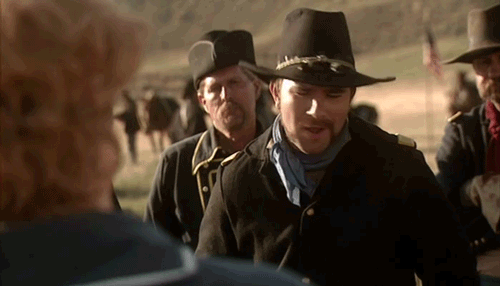

ROGER CLARK as Captain Weir in:
The Wild West (2007) Season 1, Episode 1: "Custer's Last Stand"
⭐ Watch Custer's Last Stand on DailyMotion. ⭐
(GIF Set 1/6)
#roger clark#the wild west#custer's last stand#toby stephens#westerns#documentaries#bbc#general custer#george armstrong custer#irish actors#my edits#my gifs#tv series#historical events#us history#roger's filmography#roger's tv shows#battle of the little bighorn#lakota nation
73 notes
·
View notes
Text

As if to prove that the USA officers, including George Custer, made decisions at a lower level of strategic intelligence than that of a horse, the only living being on the federal side who was neither killed nor captured during the Battle of the Little Bighorn (June 25, 1876), also called Custer's Last Stand, is the horse you see above, named, ironically, Comanche.
Comanche was the horse of one Captain Myles Keogh who, of course, died at Little Bighorn.
2 notes
·
View notes
Text
Frank Star Comes Out, recently elected president of the Oglala Sioux Tribe, sent a letter to Guns of History, Inc. requesting the withdrawal from auction of 111 item Lakota items.
Lakota items:including a square drum, a bone dancing stick, a set of beaded buffalo horns, a ceremonial pipe, and a variety of weapons and objects, including a rattle attributed to Hunkpapa Lakota leader Sitting Bull who lead his people in resistance against United States government policies and incursions into the Black Hills of what is now known as South Dakota. The catalogue also contains weapons alleged to have belonged to Oglala leaders Crazy Horse, who led a counterattack against Lt. Colonel George Custer’s 7th Cavalry, and Red Cloud, who defeated the US during Red Cloud’s War.
#native american#native american art#stolen artifacts#Lakota#stolen art#auction#native history#battle of the little bighorn#sitting bull
3 notes
·
View notes
Text

Custer's Last Stand by Newell Convers Wyeth
#newell convers wyeth#n. c. wyeth#n.c. wyeth#art#battle of little bighorn#america#american#american indian#native american#history#george armstrong custer#north america#united states of america#us army#american indian wars#lakota#great sioux war of 1876#guns#battle#custer's last stand#united states#usa#u.s.a.
57 notes
·
View notes
Text

"Let every step you take upon the earth be as a prayer." Black Elk
Artist's Instagram
Artist's Facebook
#Art#Psalm Prayers#wORKING aRTS#block print#blockprint#Black Elk#prayer#native#Battle of Little Bighorn#Wounded Knee#catholic#catholicism#Christianity#praying#he was born on my birthday :)
36 notes
·
View notes
Text

Pretty Nose (b. c. 1851), an Arapaho woman who participated in the Battle of the Little Bighorn. She lived to be at least 101 years old and reportedly became a war chief.
7 notes
·
View notes
Text
[Holding Reservation Dogs with both hands] holy FUCK I am so sorry I put off watching you for so long.
#I know every one of these characters jfc#and William is just my Dad if he had been at the battle of Little Bighorn#sadie is native#say more sadie#go watch go watch this is delightful
3 notes
·
View notes
Text
Did Buffalo Bill invent the Wild West?
Buffalo Bill is often accused of having invented a fake Wild West in his shows but TV historian Tony McMahon begs to differ
You’ve heard of Annie Oakley, Calamity Jane, Chief Sitting Bull, and of course – Buffalo Bill. Those great heroes of the Wild West who created the United States of America. Frontier folk laughing in the face of danger. Battling the fearsome Sioux and Cheyenne. Free spirits living by their own code of honour at the expanding new frontiers of America. A tough life punctuated by gunfights and…
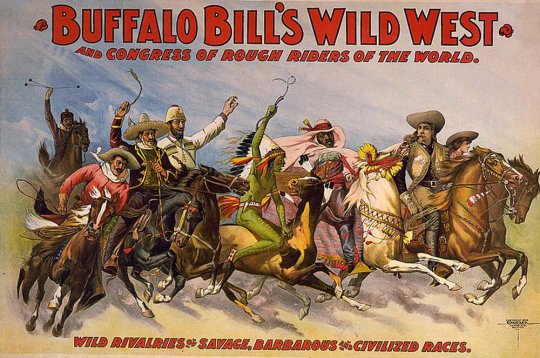
View On WordPress
#African American cowboy#Battle Little Bighorn#Bill Cody#Buffalo Bill#Buffalo Bill Edison#Calamity Jane#Cody Kansas#Cody scalping#Custer&039;s Last Stand#Edison cowboy films#General Custer#history#Sioux Cheyenne#Sitting Bull Buffalo Bill
2 notes
·
View notes
Text
Did Buffalo Bill invent the Wild West?
Buffalo Bill is often accused of having invented a fake Wild West in his shows but TV historian Tony McMahon begs to differ
You’ve heard of Annie Oakley, Calamity Jane, Chief Sitting Bull, and of course – Buffalo Bill. Those great heroes of the Wild West who created the United States of America. Frontier folk laughing in the face of danger. Battling the fearsome Sioux and Cheyenne. Free spirits living by their own code of honour at the expanding new frontiers of America. A tough life punctuated by gunfights and…

View On WordPress
#African American cowboy#Battle Little Bighorn#Bill Cody#Buffalo Bill#Buffalo Bill Edison#Calamity Jane#Cody Kansas#Cody scalping#Custer&039;s Last Stand#Edison cowboy films#General Custer#history#Sioux Cheyenne#Sitting Bull Buffalo Bill
1 note
·
View note
Text
fuck custer all my homies hate custer
1 note
·
View note
Text
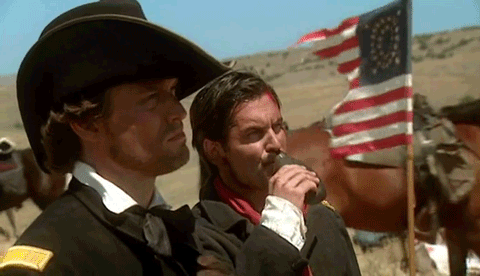
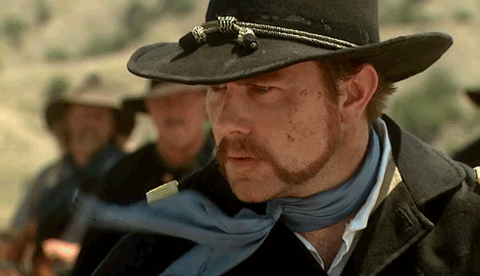

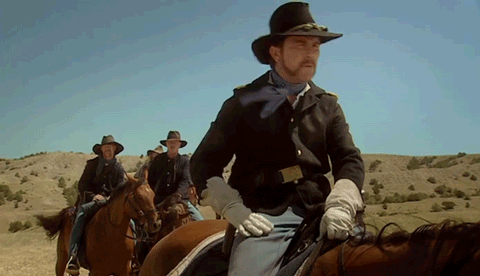
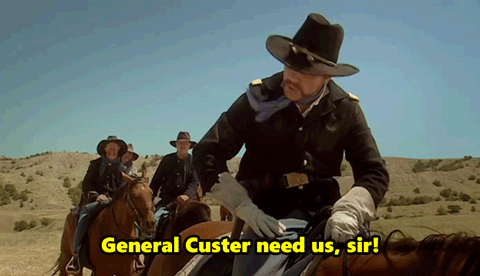

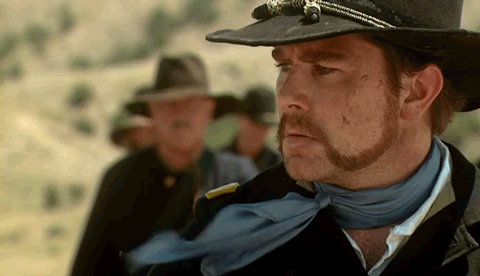
ROGER CLARK as Captain Wier in:
The Wild West (2007) Season 1, Episode 1: "Custer's Last Stand"
⭐Watch Custer's Last Stand on Dailymotion ⭐
(GIF Set 5/6)
#roger clark#the wild west#custer's last stand#stephen billington#nigel whitney#bbc#general custer#westerns#us history#documentaries#george armstrong custer#battle of the little bighorn#roger's filmography#roger's tv shows#irish actors#lakota nation#historical events#the good ol' fashioned q
38 notes
·
View notes
Text

June 25 is Victory Day for Lakota, Cheyenne and Arapaho people whose ancestors defeated the US Army's 7th Cavalry in the Battle of Greasy Grass/Little Bighorn in 1876.
469 notes
·
View notes
Text
My late father, who was raised on the Standing Rock Reservation, was born just 16 years after 'Rain-in-the-Face' died and many people still remembered him personally and still talked about him.
He looks like a very pleasant man, but when I would throw a tantrum as a small child, my father would call me "Little Chief Rain-in-the-Face."

From the Battle of Little Big Horn “I had sung the war song, I had smelt power smoke, my heart was bad--I was like one who has no mind. I rushed in and took their flag; my pony fell dead as I took it. I cut the thong that bound me; I jumped up and brained the sword flag man with my war club, and ran back to our line with the flag. I was mad, I got a fresh pony and rushed back shooting, cutting and slashing. This pony was shot and I got another. This time I saw Little Hair (Tom Custer)--I remembered my vow, I was crazy; I feared nothing. I knew nothing would hurt me for I had my white weasel tail on. I didn't know how many I killed trying to get at him. He knew me. I laughed at him and yelled at him. I saw his mouth move but there was so much noise I couldn't hear his voice. He was afraid. When I got near enough I shot him with my revolver. My gun was gone. I didn't know where. I got back on my pony and rode off. I was satisfied and sick of fighting." Itoηagaju (Rain-in-the-Face) Lakota , 1835-1905
22 notes
·
View notes
Text

White Moon, a Northern Cheyenne who fought at the Battle of Little Bighorn holds a US Springfield carbine, caliber .45, serial no. 48482, he took from a slain 7th Cavalry trooper on June 25, 1876.
He gave the carbine to Thomas B. Marquis on June 24, 1927, soon after the doctor-historian took his picture.
White Moon was 77 years old when he participated with fellow Northern Cheyenne Wooden Leg, Little Sun, Wolf Chief and Big Beaver at the 51st Little Bighorn Battle Reunion.
He died in May 1931.
335 notes
·
View notes
Text

Nicholas Black Elk
Servant of God
December 1, 1863 - August 19, 1950
Nicholas Black Elk, an Oglala Lakota Indian and cousin to Crazy Horse was a medicine man and healer. He fought in the Battle of Little Bighorn and the Wounded Knee Massacre and toured with Buffalo Bill's Wild West Show. In 1904 Black Elk was baptized a Catholic, chose the Christian name Nicholas, and became a Catechist, promoting the Rosary, Sacred Heart Devotion, and reading the Bible. Nicholas was smart and passionate about his culture and faith, uniting them to save souls. The Diocese of Rapid City, SD opened his cause for canonization in 2017.

Prints, plaques & holy cards available for purchase. (website)
109 notes
·
View notes